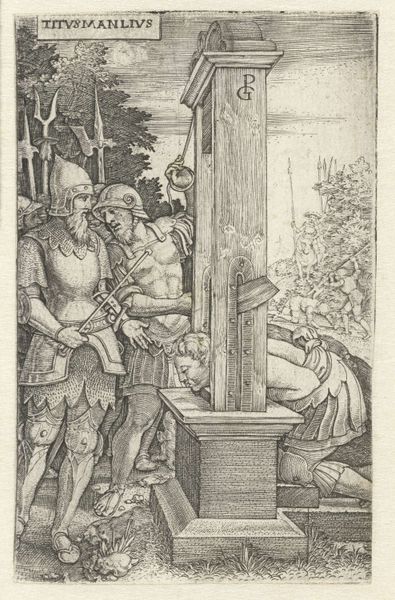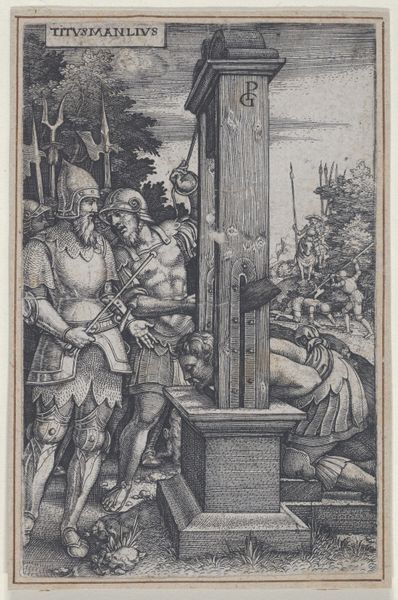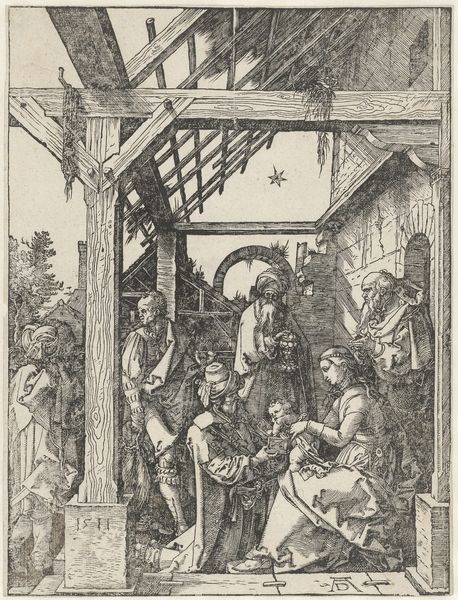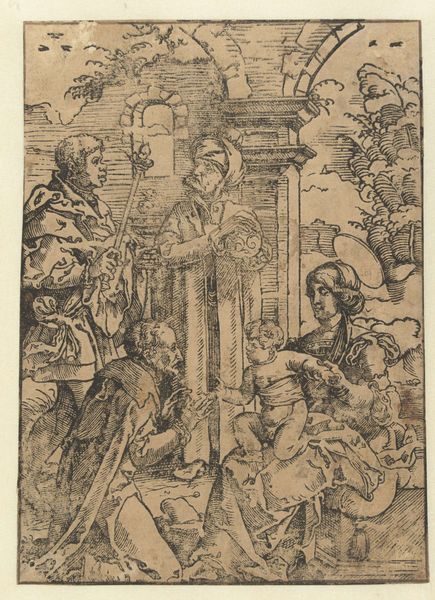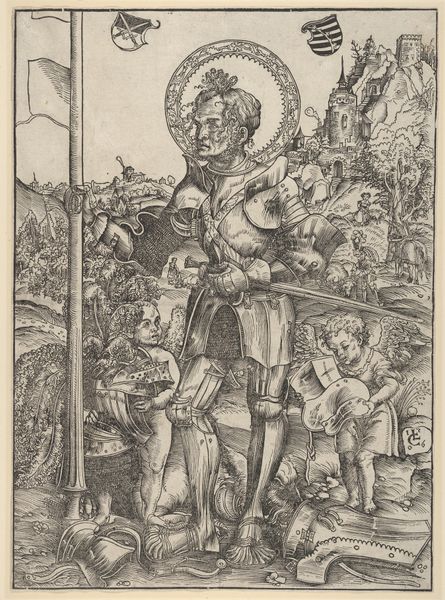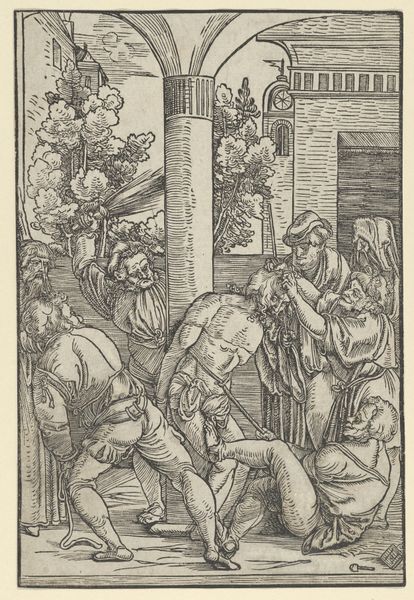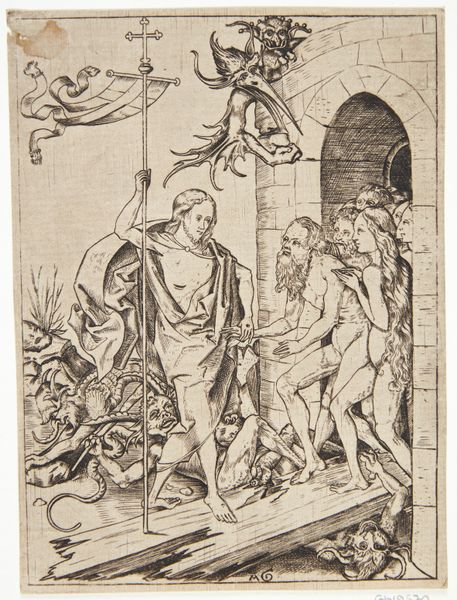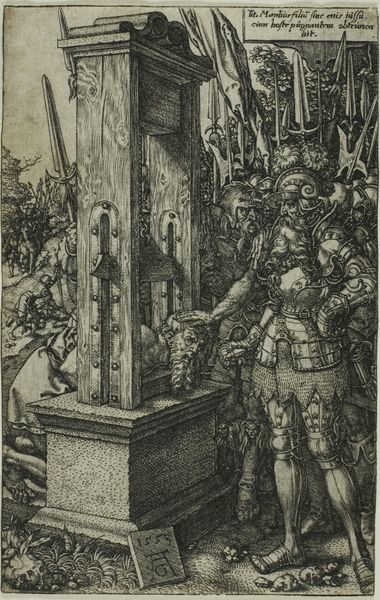
drawing, print, engraving
#
drawing
# print
#
figuration
#
11_renaissance
#
soldier
#
pen-ink sketch
#
history-painting
#
northern-renaissance
#
engraving
Dimensions: Sheet: 4 5/8 × 2 15/16 in. (11.7 × 7.5 cm)
Copyright: Public Domain
Curator: A rather grim image. Pencz's print "Titus Manlius, from Roman Heroes," created in 1535, depicts a beheading with remarkable, if unsettling, precision. Editor: Immediately, I'm struck by the rigid verticality of the execution device against the chaos of the figures. The geometric order feels cold and inhuman, amplifying the horror. Curator: Indeed. Pencz's expert handling of line creates varied textures, from the smooth surfaces of the armor to the rough wood of the device. Note the strong diagonal lines of the soldiers' spears, a dynamic counterpoint to the static post. The whole composition is incredibly dense. Editor: Beyond the formal qualities, this is loaded with symbols. Decapitation represents the ultimate loss of power and identity. Consider the severed head staring directly down—it’s a potent symbol of earthly failure and mortality, particularly evocative within the series title, Roman Heroes. Curator: He employs the convention of the “sprezzatura”, which imparts to it an elevated character, almost noble, where the event transcends brutal reality through skillful craft and artistic vision. The foreground action is stark, almost detached, in comparison to the softer forms rendered further into the picture's distance. Editor: Yes, while the act is brutal, the emphasis on detail and the stoic expressions evoke Roman values like discipline and justice, but the question still remains of Pencz’s intention. Is it to warn, glorify, or simply document this history? What does that say of us, watching this violence transpire even now? Curator: What strikes me in consideration is that although the subject is rife with pathos, there is simultaneously great order of the kind typically apparent in works of similar style—yet such rigor applied in an artistic rendering of brutality complicates matters somewhat. Perhaps it’s his humanizing the execution by having the figure meet death in view of us; it may not be an endorsement but certainly feels less aloof than other presentations might feel. Editor: Perhaps, but remember that throughout history, rulers have used executions as demonstrations of power—literally cutting heads off to show everyone else who’s in charge! And with the hero archetype now, there remains some fascination there even centuries onward... Curator: It serves as a complex historical object—a reminder that even in art, beauty and horror can coexist. Editor: Indeed. An unsettling work, provoking uncomfortable questions.
Comments
No comments
Be the first to comment and join the conversation on the ultimate creative platform.
